The standing barbell shoulder press is one of the best exercises for developing overhead strength & stability.
Also known as the military press or the overhead press, this exercise is a great way to build strength in the shoulders and arms.
It’s not only an effective shoulder movement but also a functional, compound multi-joint exercise, as well.
I will cover how to perform the standing barbell shoulder press, its benefits, and ideal variations for your experience level.
In This Article
- Performing A Standing Barbell Shoulder Press – Step-By-Step
- Beginner Variation – Seated Barbell Shoulder Press
- Advanced Variation – Split Stance Barbell Shoulder Press
- Standing Barbell Shoulder Press Muscles Worked & Their Roles
- Standing Barbell Shoulder Press Benefits
- Frequently Asked Questions About Barbell Shoulder Press
- Final Thoughts
Performing A Standing Barbell Shoulder Press – Step-By-Step
Below we’ll break down exactly what you need to know so you can master the standing barbell shoulder press and see results without unwanted injury.
Proper Standing Barbell Shoulder Press Form
In my experience, the best way to learn any exercise is to learn the fundamental mechanics of the movement.
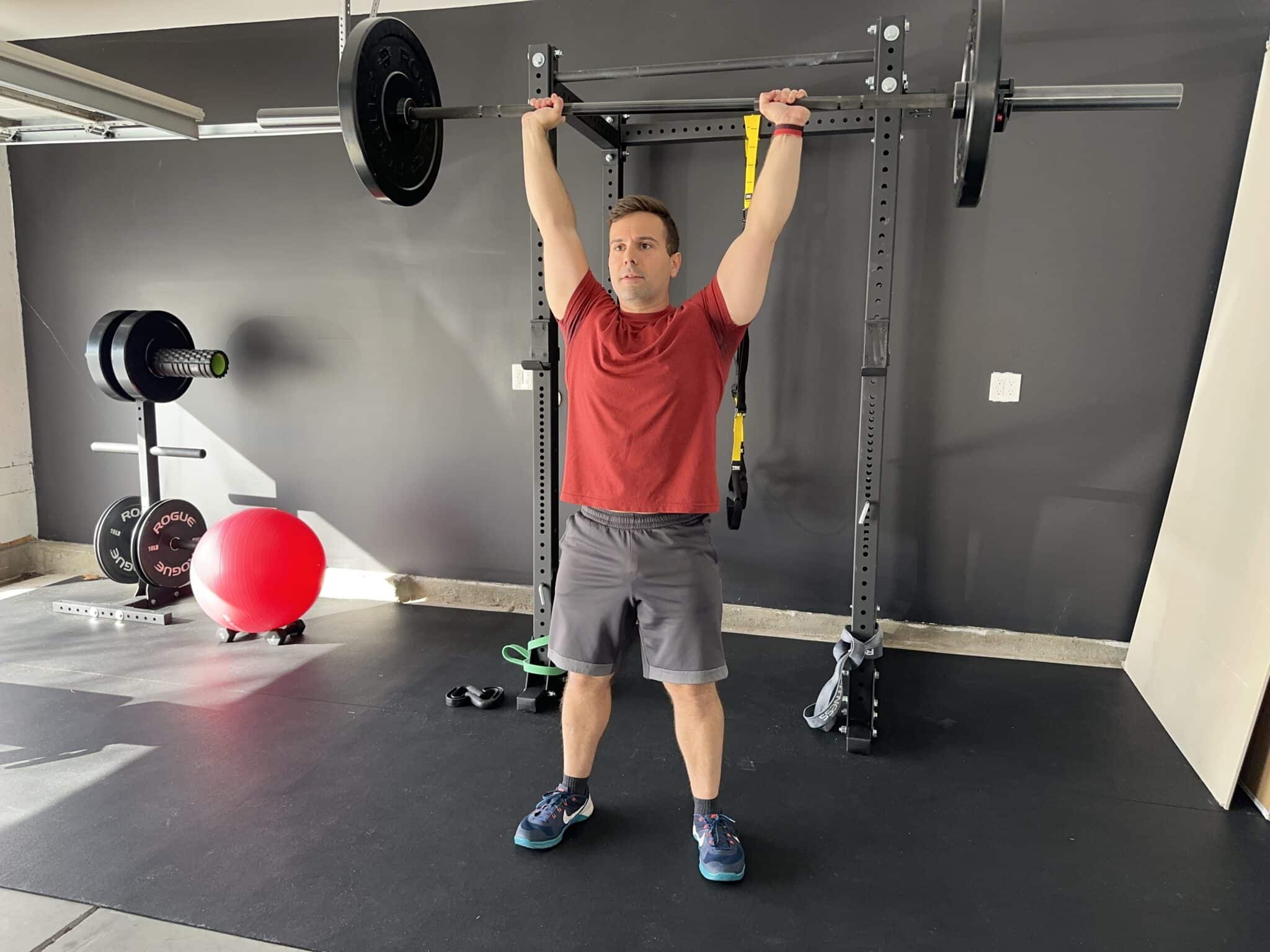
Below are the key components you’ll need to learn, understand and apply to safely (and effectively) perform the seated barbell shoulder press.
1) Feet Position
When performing any standing overhead pressing movement, I find a shoulder-width stance to be ideal for balance and stability.
Depending on what’s most comfortable for your body type you can keep your toes pointed forward or angled outward slightly.
Also, maintain a slight bend at the knees while also squeezing your glute muscles to keep them engaged.
Coaching Note: A shoulder-width (or slightly wider) foot position is typically optimal for most individuals to feel balanced throughout the movement. However, you should always experiment to find what’s most comfortable.
2) Grip Width
I’ve found the ideal grip width somewhere between shoulder width and slightly outside of shoulder width.
This is for optimal positioning of the wrist and elbows so they fall directly underneath the barbell.
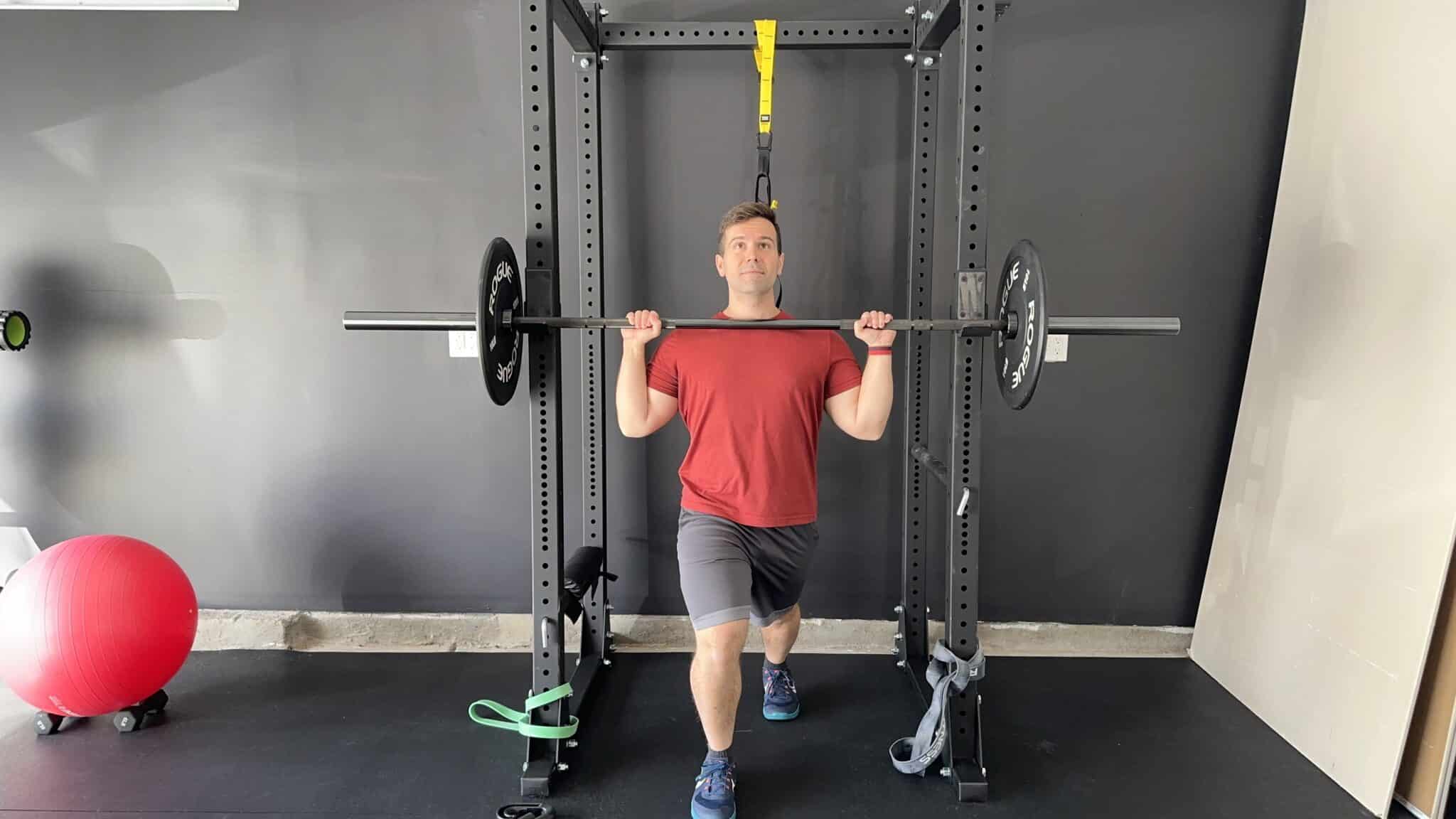
However, since each person has different limb lengths you’ll want to experiment to determine which grip width feels optimal for you!
Coaching Note: Take a grip that is slightly outside of shoulder width. It should feel comfortable at both the bottom position and when pressed above your head. (Experiment with barbell only, if needed).
3) Stabilizing Your Shoulder Blades
Not sure how to “stabilize your shoulder blades”?
Scapular retraction (pulling your shoulder blades down and back) is when you’re squeezing your shoulder blades together.
Below you’ll see how to stabilize your shoulders in two simple steps.
However, if you’d like to dive a bit deeper into shoulder stabilization then check out this post from Squat University.
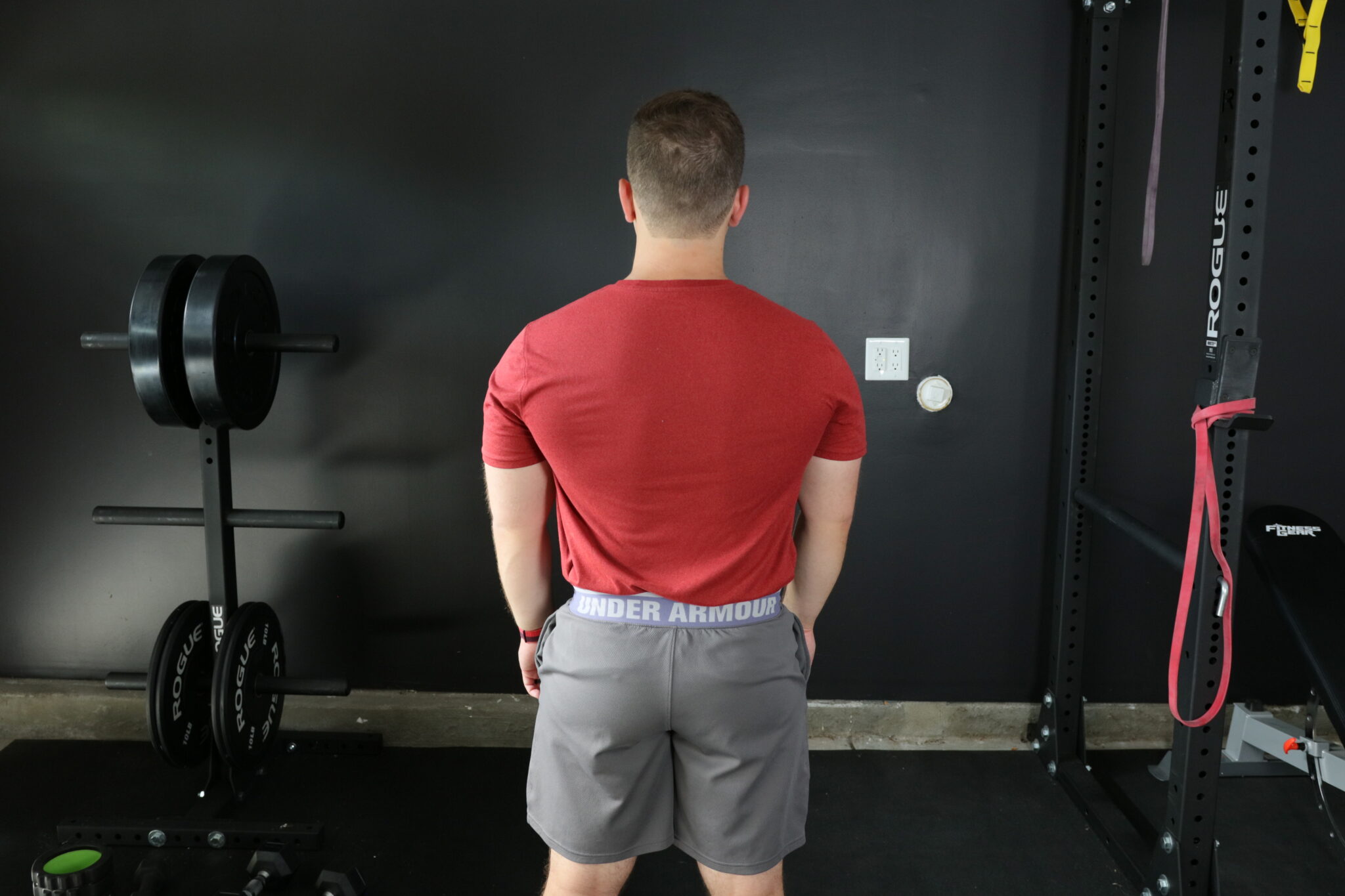
First, focus on squeezing your shoulder blades together and backward
Second, roll your shoulders down toward the ground behind you – this is a subtle movement.
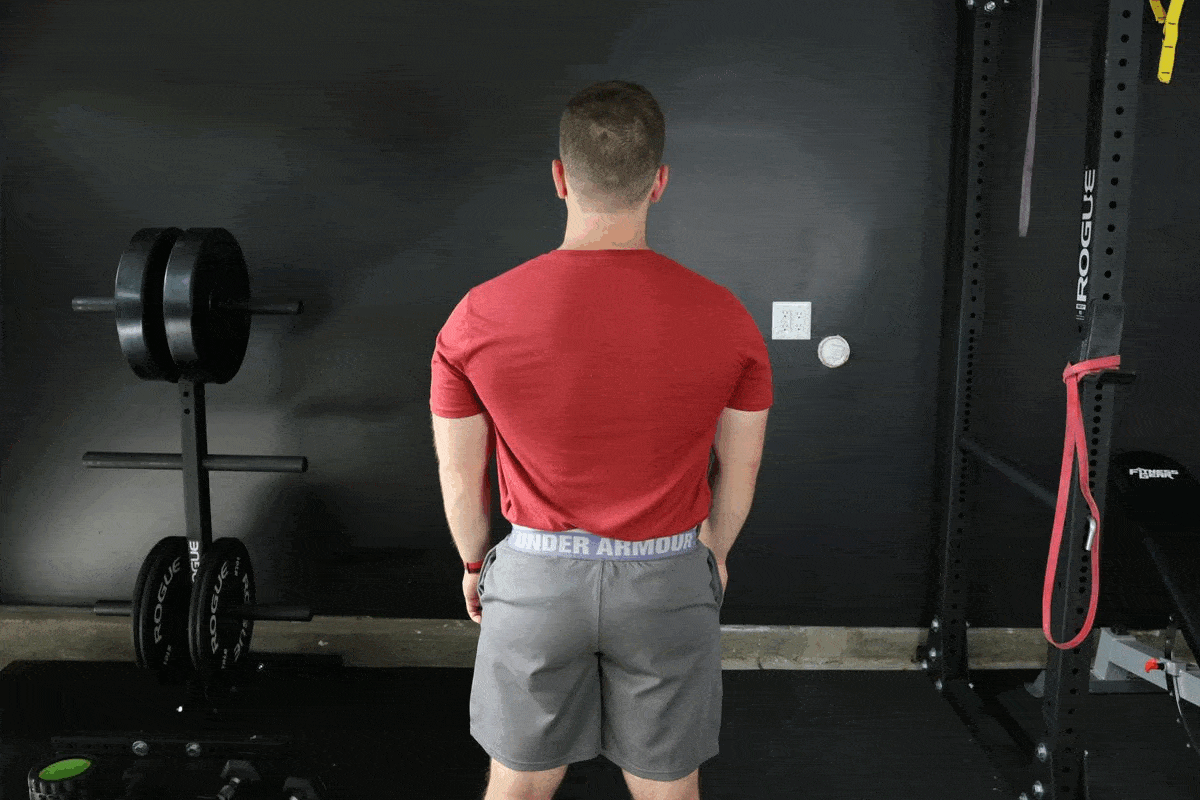
Additionally, retracting your shoulder blade (scapula) helps stabilize your shoulder joint while performing the exercise which helps prevent injury to your shoulder.
Coaching Note: With your hands at the appropriate grip length, start by squeezing your shoulder blades backward and together. Remember to imagine you’re trying to squeeze a pencil between your shoulder blades and hold it in place.
4) Elbowing Positioning During Movement
An easy way to ensure your doing this correctly, is first, to stabilize your shoulder blades correctly.
Secondly, make sure the barbell is hovering above your collarbone once you unrack the weight.
While in the starting position your elbows should fall directly underneath your wrist in a vertical fashion.
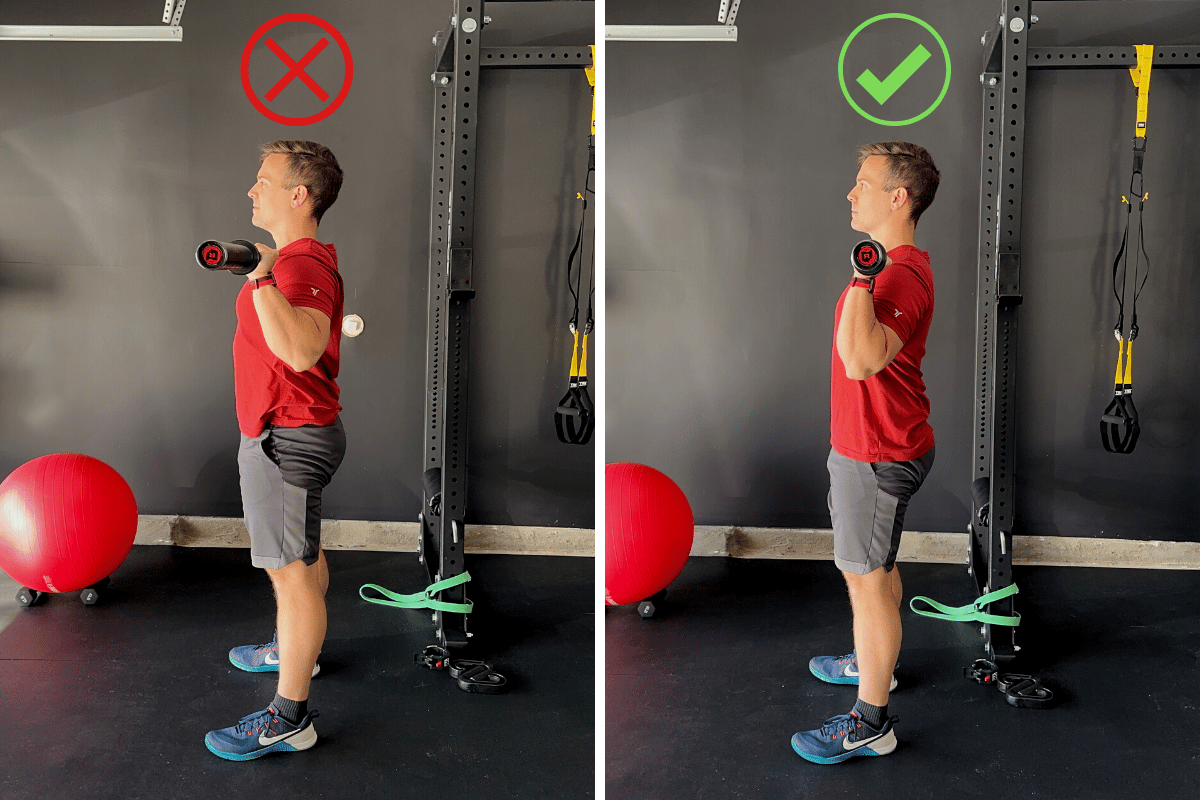
As you press the weight over your head it’s normal for your elbows to rotate outward.
Your elbows will move from pointing down toward the ground to outwards pointing away from your ears.
Coaching Note: Ensure your elbows fall underneath your wrist and are not flared out behind your body.
5) Bracing, Breathing & Execution
It’s time to prepare and stabilize your core so you perform your barbell shoulder press.
Now, take a deep breath inhaling (through your nose) to create internal abdominal pressure.
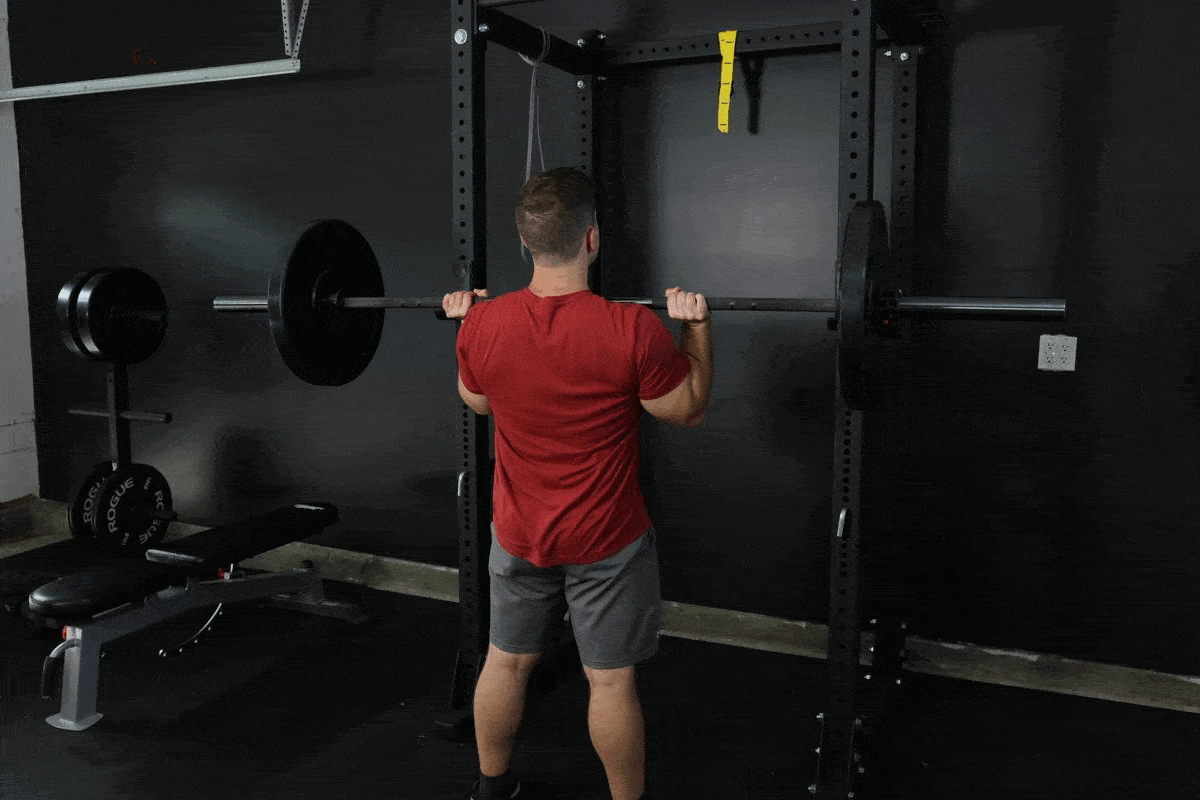
Finally, you can unrack the barbell and in a controlled tempo, perform the movement.
Coaching Note: Ideally, you want to maintain a straight bar path up & down leading from your collarbone. As your press the weight over your head it’s normal for your head to pivot backward out of the path.
Beginner Variation – Seated Barbell Shoulder Press
The setup & movement cues for this beginner variation of the barbell shoulder press exercise will be very similar to the standing counterpart.
- Find your grip width
- Stabilize your shoulder blades
- Watch elbow position during the movement
- Properly brace your core
Two exceptions to this movement are you don’t need to worry about your foot position & the biggest (and obvious) difference is that you’re sitting on a bench versus standing up.
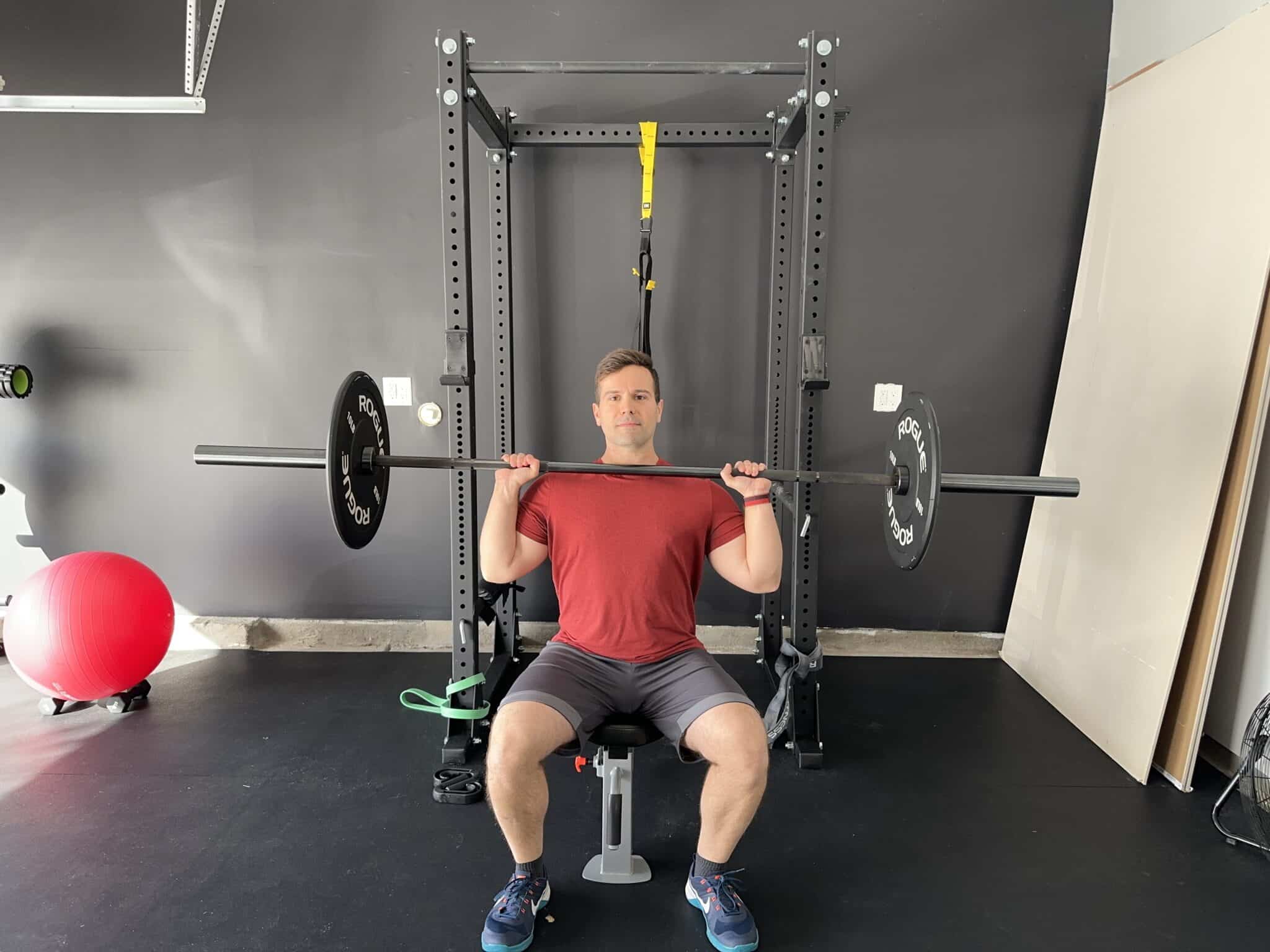
By starting with a seated variation of the shoulder press you’re reducing the overall complexity of the movement.
Thus allowing yourself to learn the proper exercise mechanics while still getting stronger in the process.
1) Seated Barbell Shoulder Press (Supported)
Perform the exercise seated with a bench that provides back support. This will provide additional help stabilizing your core as you get stronger and develop your technique.
2) Seated Barbell Shoulder Press (Unsupported)
Perform the exercise seated on a bench with no back support. The intensity will increase significantly since you’ll have to stabilize your torso while pressing the weight above your head.
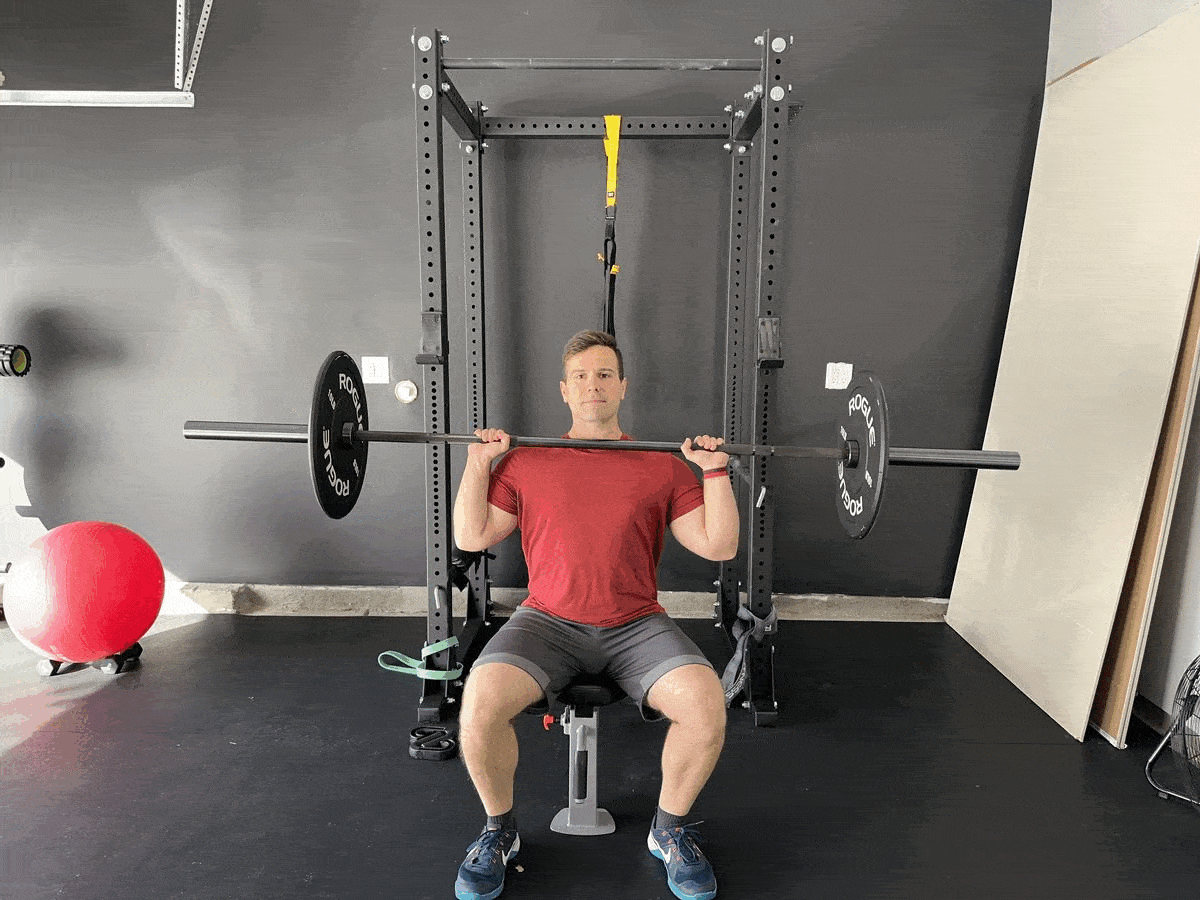
Coaching Note: When performing the seated variation of this exercise ensure your shoulder blades or pulled back and down firmly against the seat. If performing the unsupported variation ensure you keep your core tight by practicing proper bracing & breathing outlined above.
Advanced Variation – Split Stance Barbell Shoulder Press
Adding a split stance variable to most standing exercises will increase the difficulty by challenging your balance as your body position becomes less stable.
Your core muscles will have to work that much harder to stabilize your spine as you press the weight over your head.
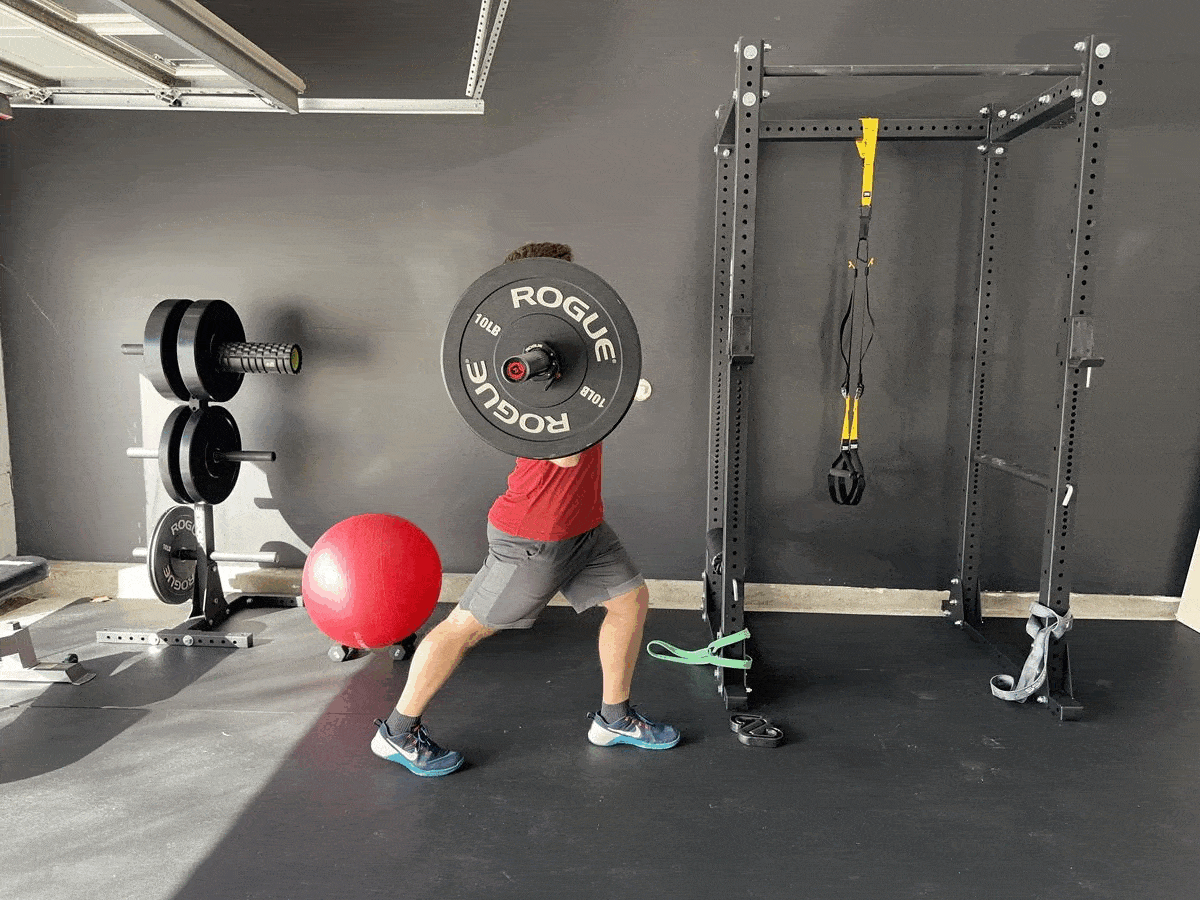
Coaching Note: Take a balanced stance with most of your weight centered between both legs but with a slightly greater percentage shifted towards your front foot. Also, make sure your front foot is rooted to the ground while you are on the ball of your back foot.
Standing Barbell Shoulder Press Muscles Worked & Their Roles
Below is a short breakdown of the seated barbell shoulder press muscles and the roles each plays.
Also, I included a reference table to help explain the difference between how specific muscles play a part in the movement of an exercise.
| Prime Mover (Agonist) Muscles | These are the muscles doing the brunt of the work contracting to generate movement for the exercise. |
| Synergist Muscles | The synergist muscles are a group of nearby muscles that assist the prime movers in executing an exercise. They do this by helping stabilize the joint around where movement is happening. |
| Antagonist Muscles | The antagonist’s muscles perform the opposite action of the prime mover. (ex: If your bicep (bicep curl prime mover) is actively contracting and shortening then your tricep is relaxing and lengthening.) |
Prime Mover Muscles
- Deltoid, Anterior
- Triceps Brachii
Synergist Muscles
- Abdominals
- Serratus, Anterior
Antagonist Muscles
- Latissmus Dorsi
Standing Barbell Shoulder Press Benefits
This traditional shoulder press variation has a few notable benefits worth highlighting:
- Improved Functional Strength: Since there is added instability while standing, you activate your obliques, transverse abdominal muscles, lower back, and spinal stabilizers.
- Effective Muscular Development: By utilizing the barbell & pressing from a standing (vs being seated) position you are actively engaging a few large muscle groups.
- Improved Exercise Performance: Bench press variations recruit the same muscle groups as this exercise, so the shoulder press will help improve your performance with those exercises.
Frequently Asked Questions About Barbell Shoulder Press
Here are some of the most common questions we’ve compiled and answered for you.
Is The Standing Shoulder Press A Better Exercise?
The standing barbell shoulder press is a great exercise for building functional strength in the shoulders. Unlike seated variations, it requires a certain level of core stability and overhead awareness which helps in everyday movements such as lifting objects overhead.
Why Is A Standing Shoulder Press Hard?
The standing shoulder press is challenging because it requires more core stability and balance than seated variations. When standing, the body has to work harder to maintain balance, which requires activation of the abs and lower back muscles. This added effort makes the standing shoulder press a more demanding and a great way to build functional strength.
Is It Better To Do A Shoulder Press Standing Or Seated?
The standing shoulder press is generally considered a better exercise for building functional strength, as it mimics real-life movements. However, it may not be suitable for everyone. If you cannot perform a shoulder press with proper form, it’s best to start with a seated variation until you develop the necessary skills and stability. It’s important to prioritize good form and safety when performing any exercise.
Final Thoughts
The barbell shoulder press (and variations) are great foundational movements that work multiple muscle groups, including your arms, shoulders, and core (stabilizing your spine).
Remember – the key to a great strength training program is balancing full-body functional exercises that make you stronger for everyday life.
- Choose the exercise variation that you can successfully perform at your current level of fitness.
- Practice the individual movement cues to learn the correct exercise form
- Increase your training intensity slowly and methodically over time.
We train for go muscles, not just show muscles.
Want to build a stronger, more defined back? Read this next.

